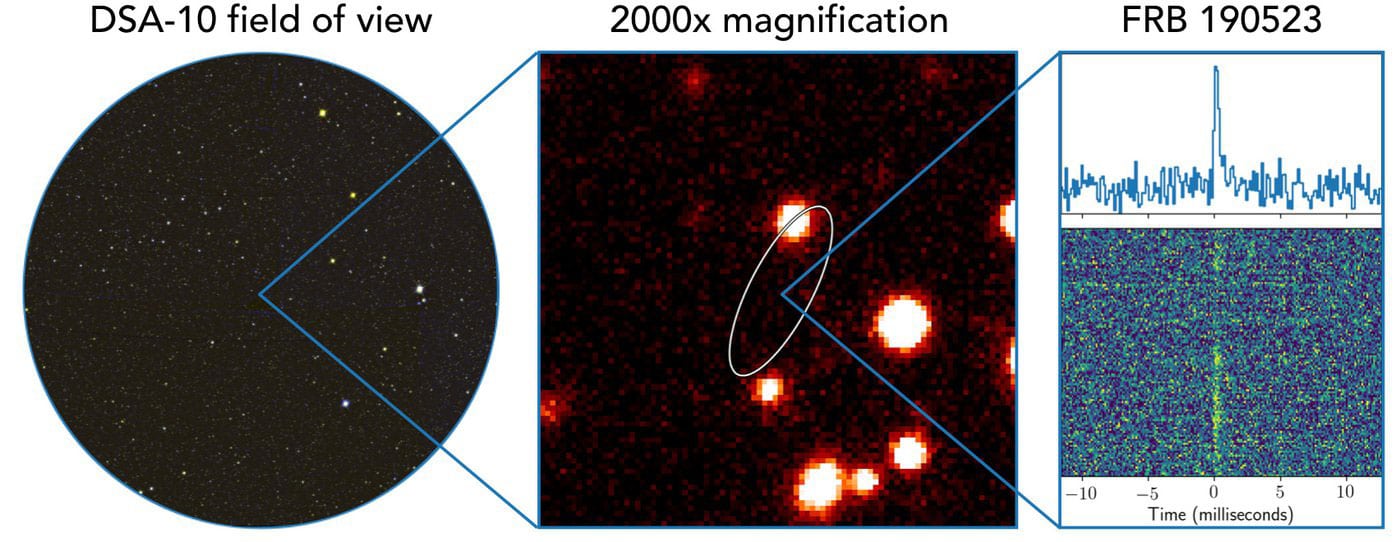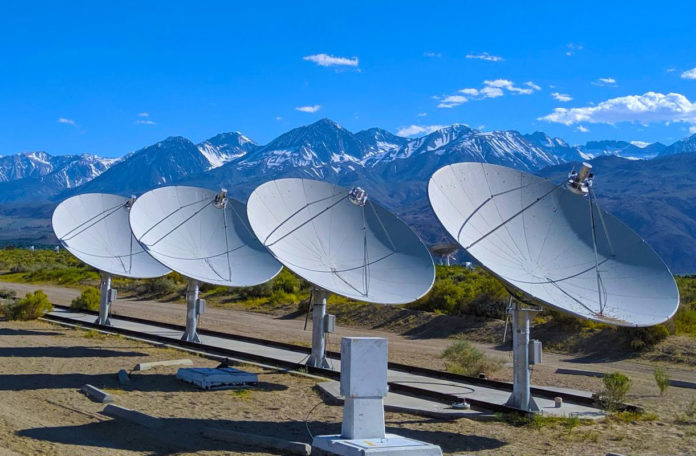Researchers at Caltech’s Owens Valley Radio Observatory (OVRO) have recently captured a new fast radio burst- named FRB 190523- from a galaxy 7.9 billion light-years away.
This is the second time, researchers have identified fast radio burst with its host galaxy. Before this discovery, only one other burst, called FRB 121102, had been localized to a host galaxy. Identifying the galaxies from which these radio bursts erupt is a critical step toward solving the mystery of what triggers them.
Vikram Ravi, a new assistant professor of astronomy at Caltech who works with the radio telescopes at OVRO, which is situated east of the Sierra Nevada mountains in California said, “Finding the locations of the one-off FRBs is challenging because it requires a radio telescope that can both discover these concise events and locate them with the resolving power of a mile-wide radio dish.”
“At OVRO, we built a new array of ten 4.5-meter dishes that collectively act like a mile-wide dish to cover an area on the sky the size of 150 full moons. To do this, a powerful digital system ingests and processes an amount of data equivalent to a DVD every second.”

“The new OVRO instrument is called the Deep Synoptic Array-10, with the “10” referring to the number of dishes. This array serves as a stepping stone for the planned Deep Synoptic Array (DSA), funded by the National Science Foundation (NSF), which, when completed by 2021, will ultimately consist of 110 radio dishes.”
Richard Barvainis, program director at the NSF for the Mid-Scale Innovations Program, which is funding the construction of the DSA said, “The DSA is expected to discover and localize more than 100 FRBs per year. Astronomers have been chasing FRBs for a decade now, and we’re finally drawing a bead on them with new instruments like DSA-10 and, eventually, the full DSA. Now we have a chance of figuring out just what these exotic objects might be.”
Researchers observed that the host galaxy of this newly detected burst is most alike to our milky way. This is surprising as the previously detected FRB was from a dwarf galaxy that form starts more than a hundred times faster than the Milky Way.
Ravi said, “This finding tells us that every galaxy, even a run-of-the-mill galaxy like our Milky Way, can generate an FRB.”
“The discovery also suggests that a leading theory for what causes FRBs—the eruption of plasma from young, highly magnetic neutron stars, or magnetars—may need to be rethought.”
“The theory that FRBs come from magnetars was developed in part because the earlier FRB 121102 came from an active star-forming environment, where young magnetars can be formed in the supernovae of massive stars. But the host galaxy of FRB 190523 is more mellow in comparison.”
Gregg Hallinan, the director of OVRO and a professor of astronomy at Caltech, said, “With the full Deep Synoptic Array, we are going to find and localize FRBs every few days. This is an exciting time for FRB discoveries.”
A paper about the discovery appears online July 2 in Nature.
